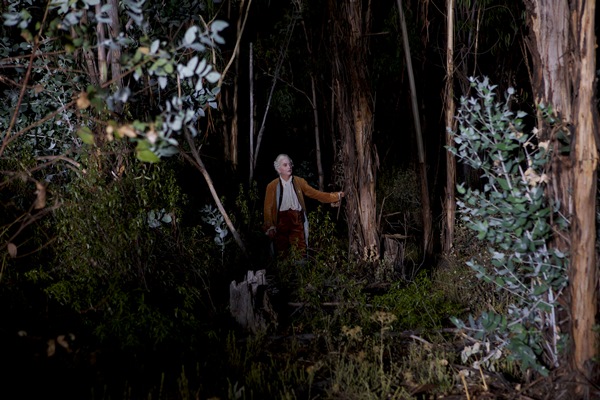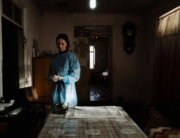
Albert Serra’s new film, the sexually explicit Liberté, is ideally suited for festivals that aim to present wide-ranging and eclectic options. It’s the sort of niche selection that will not be widely released (if at all in many countries) and most likely will appeal to an exclusive audience.
So don’t be surprised to hear reverberating footsteps of viewers leaving a screening. Expect walkouts, especially by audience members who assume that they’re going to see another picturesque period piece in the vein of the director’s The Death of Louis XIV.
Throughout its 135 minutes, the film has a strange, almost hypnotic pull as it turns its viewers into complicit voyeurs. A brief prologue—including a quote from the memoirs of Casanova (a role model here)—introduces the foppishly attired aristocrats and their servants, stranded in a forest near Potsdam, where the boundary-breaking libertines exiled by Louis XVI have sought political protection. The dialogue in this section is peppered with sexual explicitness, a heads up of what’s to come—no pun intended, really.
Most of the movie takes place at night in a forest clearing as men slowly emerge from the trees and underbrush, rubbing their crotches, looking for signals from a potential sexual partner. If there is one central visual motif, it’s of someone, usually a man, in profile looking off screen, in search of the next encounter, as a participant or observer. This spectator sport often entails submission, sometimes in the form of humiliation or punishment; one nobleman demands to be whipped harder with a stick until his buttocks bleed; and a woman and a man together urinate on another participant, whose masklike face has been presumably scarred by fire, as he masturbates. Often in cinematographer Artur Tort’s framing, foliage camouflages the ongoing activity.
It’s customary in European films for directors to use adult film stars to enact specific sexual acts. Seemingly, there are no such substitutions in these nocturnal rendezvous. The cast includes actors, nonprofessional performers, and even members of Serra’s crew. Much of what is depicted can be seen on any given porn website; one major difference is that the men are bewigged and powdered and the women corseted, or tied nude to a tree. Though the men are of different ages and physiques, the women are noticeably lithe and younger.
Serra creates an insular, atmospheric examination of a mindset. It is not so much about the sex but the behavior and the lack of social limitations and moral boundaries that these men and women deliberately break. It’s not necessarily sexy, although that’s in the eye of the beholder. The graphic sex is almost clinical, especially in the close-ups of the almost mechanical, though not quite anonymous, sex. As a result, this is one of the most successful films by a major director to focus on explicit sexuality, unlike Michael Winterbottom’s 9 Songs and Gaspar Noë’s Love. Their sex scenes were tethered to an almost nonexistent story line.
Perhaps the film that runs closest to the transgressive and iconoclastic attitude of Liberté is the Gore Vidal-penned Caligula, a pornographic free-for-all depiction of the sexual hedonism that marked the short reign of the notorious Roman emperor. That 1980 movie had a troublesome history with multiple directors and meltdowns, and it shows in the patchwork result. It also gleefully exploited sexual violence in which not all the characters were willing, and its series of exploitation and shock becomes wearisome. If Serra’s libertines are challenging each other to undertake the next taboo-busting feat, the director also dares viewers to see what next emerges out of the woods.
Liberté received the Special Jury Prize in the Un Certain Regard section at this year’s Cannes Film Festival and recently played at the New York Film Festival. It will be released in the United States in 2020.






Leave A Comment